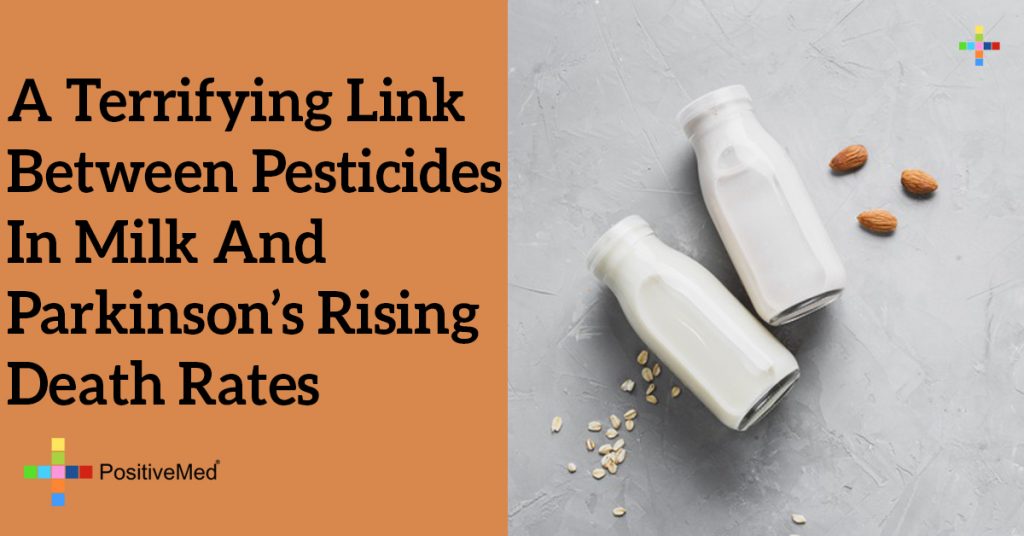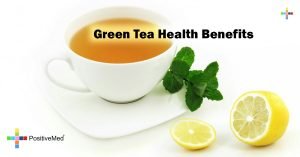
A Terrifying Link Between Pesticides In Milk And Parkinson’s Rising Death Rates
[nextpage title=”…”]
What Is Parkinson’s Disease?
Following Alzheimer’s disease, Parkinson’s is the second most common neurodegenerative disease. As symptoms of Parkinson’s disease worsen over time, it is considered a chronic and progressive movement disorder. The exact cause remains unknown, however, it has been determined that this disease directly affects the functionality and survival of vital nerve cells within the brain. The area of the brain where these nerve cells, or neurons, are affected is referred to as the substantia nigra.

An important function of these neurons is the production of dopamine, which is a chemical that sends signals to the area of the brain responsible for the regulation of movement and coordination. Those who suffer from Parkinson’s disease can lose the ability to control their bodily movements. This is because as their disease progresses, more neurons die or become damaged, which results in the decreased production of dopamine, the chemical necessary for movement and coordination.
Parkinson Facts & Statistics
According to the CDC, from 1973 to 2003 the United States death rates from Parkinson’s Disease more than doubled, and in 2003, Parkinson’s became the 14th leading cause of death. The Parkinson’s Disease Foundation reports the following statistics as well:
- As many as one million Americans are currently living with Parkinson’s disease. This total is greater than the combination of those suffering from muscular dystrophy, multiple sclerosis, and Lou Gehrig’s disease. (Affecting approximately 1.6% of the American population over age 65)
- Each year, approximately 60,000 Americans are diagnosed with Parkinson’s disease, in addition to the thousands of cases that are undetected.
Study Associates Milk Consumption to Parkinson’s Disease
This study was supported by the National Heart, Lung, and Blood Institute; the National Institute on Aging; the Department of the Army; the National Institute of Neurological Disorders and Stroke; the Department of Veterans Affairs; and the Kuakini Medical Center. The findings were published in the December 2015 online issue of Neurology, a medical journal of the American Academy of Neurology.
For the purpose of this study, 449 Japanese-American men who were participants in the Honolulu-Asia Aging Study were followed for more than 30 years until their death. The average age of these men was 54.
RELATED ARTICLE: Turmeric fights against Parkinson’s disease
[/nextpage] [nextpage title=”…”]
Upon the death of the participants, researchers performed autopsies to assess whether the men had lost brain cells in the substantia nigra. As previously mentioned, this occurs in Parkinson’s disease. Researchers also measure the amount of heptachlor epoxide residue in 116 brains.
Heptachlor epoxide was a pesticide that was found in Hawaii’s milk supply at very high levels in the early 1980s. During this time, the United States banned the use of this pesticide, however, soil and water supplies could have remained affected for many years.
When assessing the non-smoking participants, researchers found that those who drank more than 2 cups of milk each day had 40 percent fewer brain cells in the substantia nigra than those who drank less than 2 cups of milk each day.
Of the 116 brains assessed by researchers, the residue of heptachlor epoxide was found in 90 percent of those who drank the greatest amount of milk, as opposed to the 63 percent that was found in the participants who had no milk consumption.
When looking at the study participants that were smokers, no association was identified between milk consumption and the loss of brain cells. Previously conducted studies have reported that those who smoke have a lower risk of developing Parkinson’s disease.
Researchers made it clear that this study does not show that the milk or pesticide intake caused Parkinson’s disease, instead, it only shows an association between these factors.
So does this represent a correlation between the identification of this pesticide in the milk supply and the doubling death rates of Parkinson’s years later?
Honglei Chen MD, Ph.D. from the National Institute of Environmental Health Sciences, and a member of the American Academy of Neurology responded to these survey findings in a corresponding editorial. He stated that there could be several possible explanations for this association, even chance. He also noted that this study was a perfect example of how epidemiological studies can assist in the search for the causes of Parkinson’s disease.
The author of the study, Robert D. Abbott, stated that the researchers see no other explanation for heptachlor epoxide to be present in the brains of men who consumed milk. He went on to state that all of the data has not been obtained yet, therefore, this study is not complete, but he believes its suspicious.
[/nextpage]





